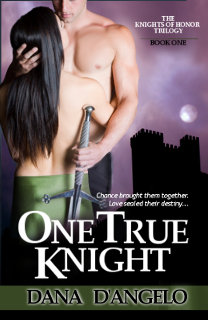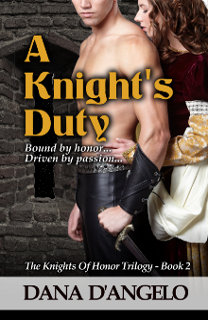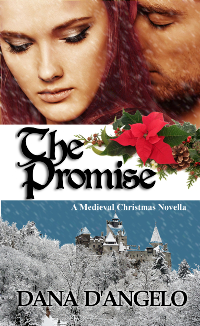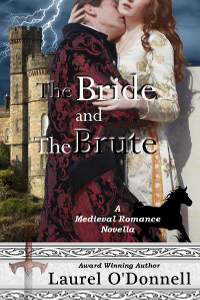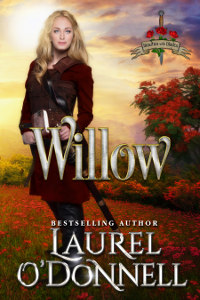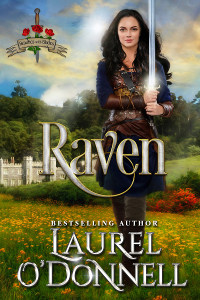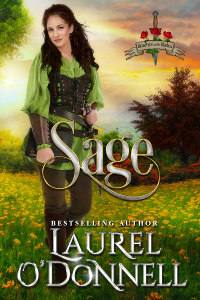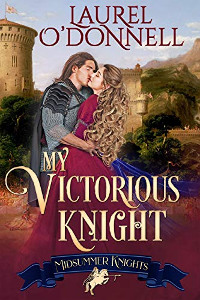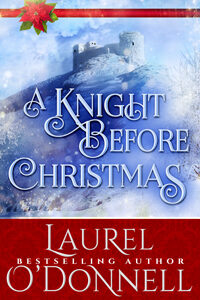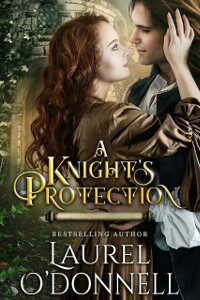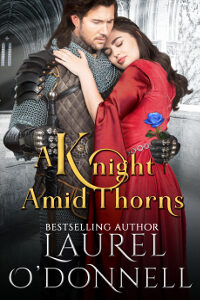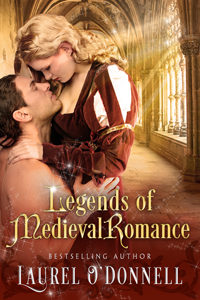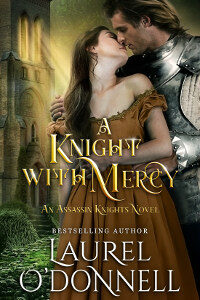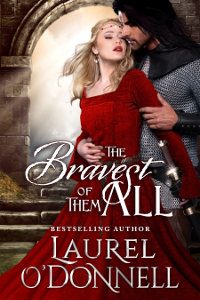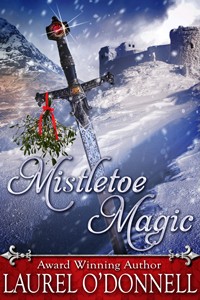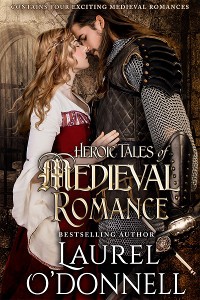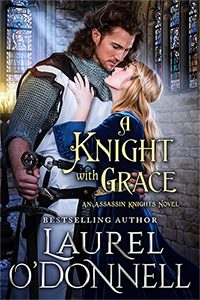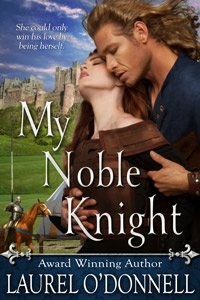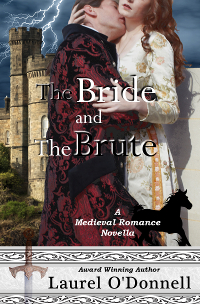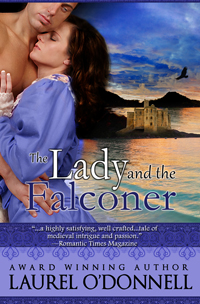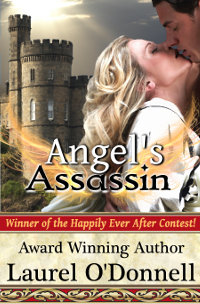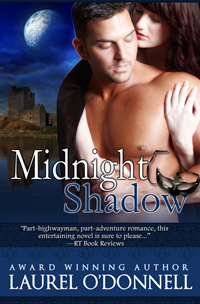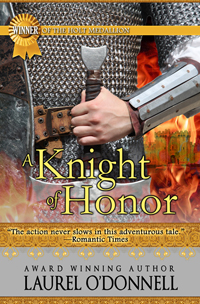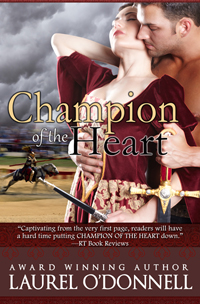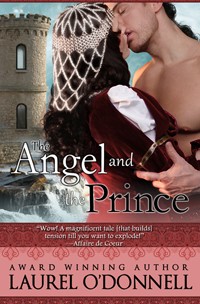Subscribe to Medieval Romances via Email
Medieval Book List
- A Knight With Mercy – Laurel O’Donnell
- Beloved in His Eyes by Laurel O’Donnell
- The Bravest of Them All – Laurel O’Donnell
- A Knight With Grace – Laurel O’Donnell
- The Bride and the Brute – Laurel O’Donnell – a free romance eBook
- A Knight of Honor – Laurel O’Donnell
- Angel’s Assassin – Laurel O’Donnell
- Cherished Protector of Her Heart by Laurel O’Donnell
- Champion of the Heart – Laurel O’Donnell
- Midnight Shadow – Laurel O’Donnell
- My Noble Knight – Laurel O’Donnell
- The Angel and the Prince – Laurel O’Donnell
- The Lady and the Falconer – Laurel O’Donnell
- A Knight’s Duty – Dana D’Angelo
- A Knight’s Reward – Catherine Kean
- A Knight’s Vengeance – Catherine Kean
- A Knight’s Temptation – Catherine Kean
- A Man Of Value – Anna Markland
- A Stormy Knight – Amy Mullen
- At His Command – Historical Romance Version – Ruth Kaufman
- At His Command – Inspirational Version – Ruth Kaufman
- Black Sword – Kathryn Le Veque
- Bound By His Kiss – Catherine Kean
- Carried Away – Anna Markland
- Chatelaine of Forez – Vijaya Schartz
- Conquering Passion – Anna Markland
- Dance of Desire – Catherine Kean
- Defiant Passion – Anna Markland
- Dark and Bright – Anna Markland
- Dark Under the Cover of Night – Jayne Castel
- Highlander – Cathleen Ross
- If Love Dares Enough – Anna Markland
- Lady of Luxembourg – Vijaya Schartz
- Lady of the Mist – Elizabeth Rose
- Lady Renegade – Elizabeth Rose
- Lord of the Blade – Elizabeth Rose
- Lord of Illusion – Elizabeth Rose
- My Lady’s Treasure – Catherine Kean
- One True Knight – Dana D’Angelo
- Pagan Queen – Vijaya Schartz
- Passion In The Blood – Anna Markland
- Prequel – Daughters of the Dagger – Elizabeth Rose (Daughters of the Dagger Series)
- Princess of Bretagne – Vijaya Schartz
- Redefining Rayne – Amy Mullen
- Ruby – Book 1 of the Daughters of the Dagger Series – Elizabeth Rose
- Sapphire – Book 2 of the Daughters of the Dagger Series – Elizabeth Rose
- Amber – Book 3 of the Daughters of the Dagger Series – Elizabeth Rose
- Amethyst – Book 4 of the Daughters of the Dagger Series – Elizabeth Rose
- Seducing Sigefroi – Vijaya Schartz
- Sweet Taste of Love – Anna Markland
- The Courageous Heart – Merry Farmer
- The Dragon and the Dreamwalker – Elizabeth Rose
- The Duke and the Dryad – Elizabeth Rose
- The Faithful Heart – Merry Farmer
- The Loyal Heart – Merry Farmer
- The Promise – A Medieval Christmas Novella – Dana D’Angelo
- The Sheik and the Siren – Elizabeth Rose
- The Sword and the Sylph – Elizabeth Rose
- The Winds Of The Heavens – Anna Markland
- Viking Fire – Andrea R. Cooper
- Wild Viking Princess – Anna Markland
Tag Archives: dana d’angelo
High Crime and Punishment in Medieval Times by Dana D’Angelo
Medieval Romances turns the spotlight on medieval romance author Dana D’Angelo. Dana has written a wonderful article about punishment and high crimes during the medieval ages. Enjoy!
High Crime and Punishment in the Medieval Period
by Dana D’Angelo
Disclaimer: This article has gruesome depictions of medieval punishments that may be disturbing to some. And while I enjoy researching and writing about the good and bad things about the middles ages, you won’t find gratuitous, gory details or violence in my stories. That’s just not my style (smiley face)
Crime is prevalent in all societies and throughout history. This is not a surprising fact. At our core, we (just like our ancestors) abhor criminals. We want these bad guys to suffer; it’s our human nature.
But during the medieval period crimes ranging from stealing to murder were dealt with very harshly. You see back then, there was no formal or dedicated police force. Penalties were generally meted out by the community. As you can imagine, the main purpose of these sentences were to keep the populous in a constant state of fear, and to deter any would-be criminals from engaging in illegal acts.
Some common forms of punishment were:
– fines
– public shaming (ie. placed in stocks in the town square, flogging etc.)
– mutilation (cutting off one or more body parts)
– death
The most serious crimes however were heard at the king’s court. It was here that the accused faced a trial by ordeal, and the outcome of this trial determined whether a person was guilty or not. Generally, the three most common trials by ordeal were:
a) Trial by fire — An example of this trial was when the accused was forced to hold a piece of hot iron, or had his hand plunged into boiling oil. Afterward, the wound was bandaged. The suspect’s innocence or guilt was determined upon what happened after the bandage was removed. If the wound healed, he was innocent. Conversely if it festered, he was guilty and faced further sentencing.
b) Trial by water — A from of this trial occurred when a suspected criminal was tied up and thrown into a lake. If drowned (and dead), he was innocent. If he floated, he was found guilty and faced mutilation or execution.
c) Trial by combat — The opposing sides were armed with weapons such as war hammers, cudgels, or quarter staves which contained sharp iron points. The last man standing won the case.
If you ask me, these punishments made no logical sense. However the theory was that if a person was innocent, God would miraculously intervene and prevent the accused from becoming injured and/or killed.
You’re probably nodding your head and thinking that yes, Dana was right. Punishments back in the middle ages were pretty horrid. Unfortunately these cruel forms of reprisal paled in comparison to what those accused of high crime or high treason were confronted with.
High treason was the worst offence that a person could commit. The king saw the act of treason as a personal attack, which in turn was an assault on his status as a sovereign and a direct threat to his right to govern his kingdom. Left unheeded, the crime had the potential to undermine the state. And so the king was left with no choice but to seek full retribution and punish the criminals in the most appalling way imaginable.
The Treason Act 1351 was enacted during a time when the monarch’s right to rule went unchallenged and the laws were written mainly to protect the interests of the throne and sovereign. King Edward III, the ruler at the time, defined what treason entailed. In his Act, he outlined the scope of high treason as:
“…compassing or imagining (ie. planning) the death of the king, his wife or eldest son and heir; violating the king’s wife, his eldest daughter if she was unmarried, or the wife of his eldest son and heir; levying war against the king in his realm, adhering to the king’s enemies in his realm, giving them aid and comfort in his realm or elsewhere; counterfeiting the Great Seal, or the Privy Seal or king’s coinage; knowingly importing counterfeit money; killing the Chancellor, or Treasurer or one of the king’s Justices while performing their offices…” (Wikipedia)
The Act was split into two categories — Petty Treason and High Treason. Petty treason consisted of a servant killing his master or lord, a wife killing her husband, or a clergyman killing his prelate or high ranking member of the clergy. Men who were guilty of petty treason were drawn and hanged while women, in regards to both petty and high treason, were drawn and burnt in an attempt to preserve public morality.
Men who were accused of high treason, however, had it worse of all.
Before the 16th century, only one witness was required to convict a person of treason. Suspects were first questioned by the Privy Council, a trial that was usually conducted in secret and held in underground prisons. Since torture was a legitimate way to extract confessions, obtain names of co-conspirators and educe other damning information, it was likely that it was used during the inquiry. After this private trial, the convicted met with a torturous execution in public. And to ensure that a large crowd attended the drawing, hanging and quartering of the condemned, officials declared the day a public holiday and offered free penances to spectators.
First, the prisoner was tied to a hurdle, which was basically a rack made from thin interwoven branches. This panel was attached behind a horse and dragged to the place of execution. With spectators watching expectantly, the accused was hanged in such a way that his neck would stretch but not break. He dangled there for long minutes and just when he was about to lose consciousness, he was cut down.
And while the prisoner was in a helpless sate, the executioners cut off his genitals and slit open his stomach. They removed the intestines and heart and burned the parts in front of the convicted man. Next, they ripped out other organs from the body and tossed the pieces into the fire. When that task was completed, they severed the head from the corpse and chopped the body into four distinct quarters. To prevent premature rotting, the corpse’s head and quarters were parboiled. And after all this was completed, the body parts were transported to different areas of the kingdom and mounted in prominent places such as the London Bridge. And it was there the reminders stayed, serving as a grisly warning to potential traitors.
Okay… now take a deep breath. I told you that retribution for crimes committed in the medieval era was horrific, didn’t I? I think that almost everyone would agree with me that it’s a good thing that we live in the 21st century. At least we can revel in the knowledge that we have the police to rely on to handle crimes, and that we would never be called upon to witness medieval brutality. Thank goodness for that!
Dana D’Angelo is the author of One True Knight and A Knight’s Duty, Books 1 and 2 of The Knights of Honor Trilogy. She endeavors to capture the essence of the medieval period and weave facts and fantasy into tales of action, adventure and romance. You can learn more about Dana by visiting www.dana-dangelo.com
Posted in Blogs
Tagged dana d'angelo
Comments Off on High Crime and Punishment in Medieval Times by Dana D’Angelo
Medieval Christmas Feasting by Dana D’Angelo
Medieval Christmas Feasting by Dana D’Angelo
In my research for medieval Christmas traditions, I came across lots of information on holiday fare. I was tempted to use much of what I found in my new release The Promise, but fortunately or unfortunately my novella is about romance and not about food.
Still, I found the topic of medieval food interesting, and I wanted to share my discoveries with you, the readers at medievalromances.com.
In general Christmas back in the Middle Ages was different from how we observe it nowadays. One of the main differences, I believe, was that the people ate and celebrated for twelve consecutive days.
A lord usually gave his workers time off during the holidays, and sometimes, in a show of generosity, he would treat his underlings to a supper in the great hall. You see, throughout the year people were in a constant state of hunger. But when Christmas rolled around, they allowed themselves to indulge in food and drink.
The dishes and drink that these people enjoyed were based on what was available and what they could afford. However they made sure that there was plenty of food during this time.
Some of the more common and note worthy foods people enjoyed were:
- Baked Minced Pie – Minced pie was baked in an oblong shape to symbolize the crib that Jesus slept in. It consisted of shredded meat, fruit, and three spices (cinnamon, cloves and nutmeg) to represent the three gifts offered to Christ from the Magi. The people held a belief that a wish made on the first bite of the pie caused the wish to come true. However if a person refused that important first bite during Christmas, bad luck would follow him in the new year.
- Wassail – A powerful, hot drink that was made from a mixture of ale, honey and spices. The host served the drink from a large bowl. With friends present, he would cheerfully call out “waes hael” or “be well.” The friends, meanwhile, would reply with “drink hael” or “drink and be well.”
- Pudding or Frumenty – A favorite food during Christmas, frumenty essentially was a spicy porridge made from boiled wheat, currants, dried fruit, yolks, and spices such as cinnamon or nutmeg. The mixture was cooled and then allowed to set before it was served to the early awaiting guests.
- Golden Roasts – In noble homes, the cooks strived for artistry in their culinary creations. For example, to make a roasted peacock look visually appealing, they would add butter and saffron to paint the meat in a golden hue. When the peacock was finished cooking, they often redressed the gilded bird in its old skin and feathers.
- Boar’s Head – The boar’s head, with an apple or an orange in its mouth, was presented to guests with great excitement during an extravagant dinner. This rosemary and bay scented centerpiece was considered a noble dish.
A big thank you to Dana D’Angelo for this great guest post! You can read more about Dana on her author page here at Medieval Romances, as well as learn about the medieval romances she has written and where you can purchase them.
Medieval Romance Monday featuring The Promise by Dana D’Angelo
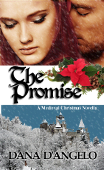
For this week’s Medieval Romance Monday we are featuring Dana D’Angelo’s new medieval romance novella The Promise.
This medieval Christmas romance novella is approximately 29,000 words or about 80 print pages.
You can read an excerpt from The Promise right here on Medieval Romances.
Thanks for visiting and happy reading!
Posted in Medieval Romance Monday
Tagged dana d'angelo, medieval romance monday
Comments Off on Medieval Romance Monday featuring The Promise by Dana D’Angelo

